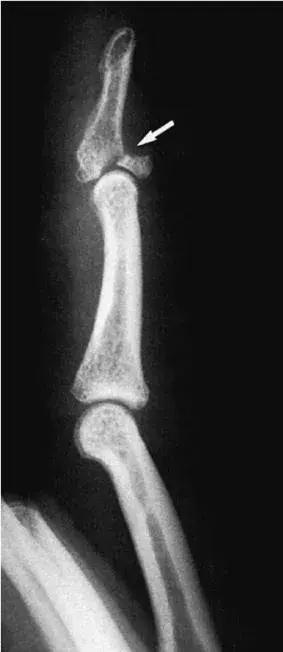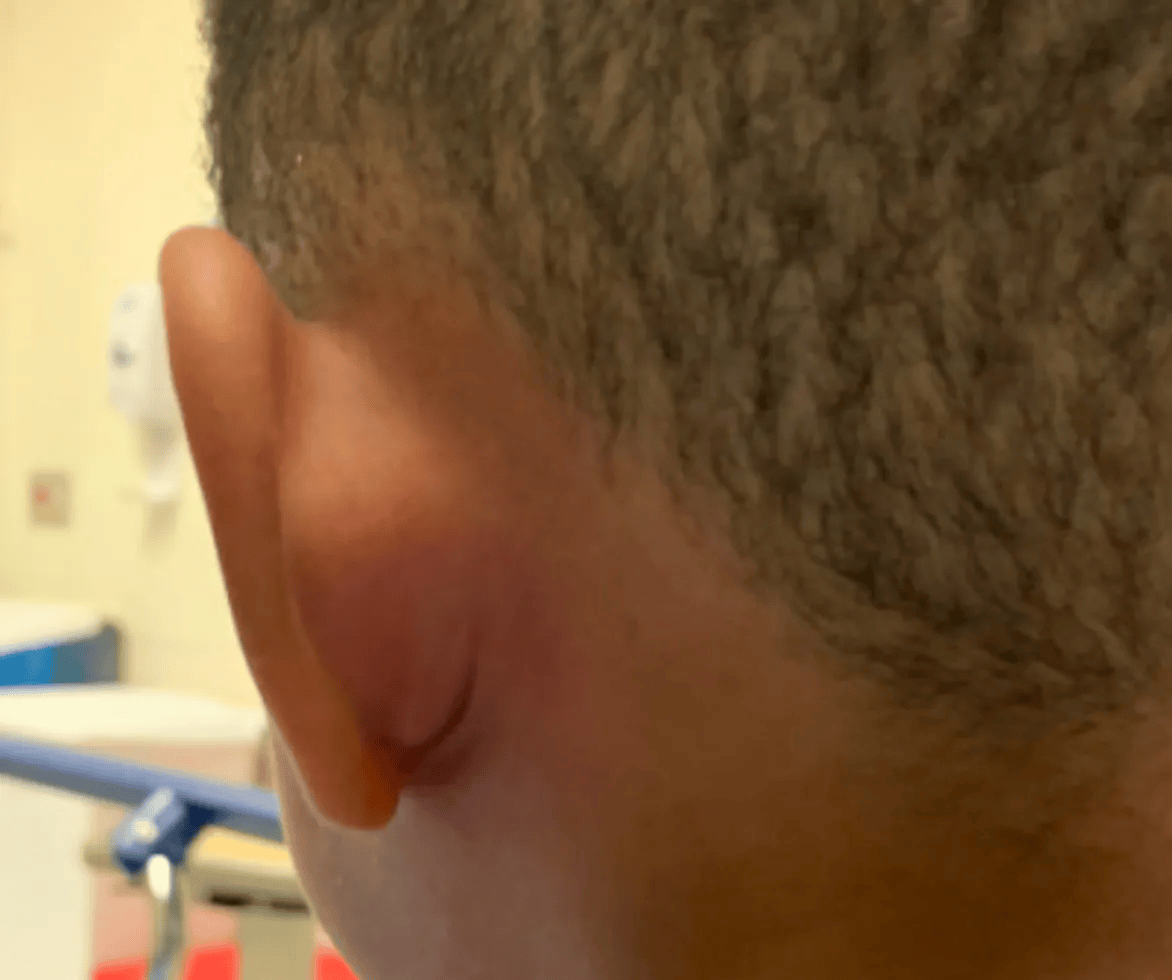Most Missed Question in Peds EM - Necrotizing Fasciitis
Necrotizing fasciitis — urgent surgical evaluation; rapidly progressive severe pain, tense swollen erythematous limb and systemic toxicity are key clues.
A 17 yo adolescent boy presents with swelling of the right arm after sustaining a small abrasion 5 days ago. He was well up until 24 hours ago when he developed fever, swelling over the area, and myalgias. Over the subsequent 24 hours, the swelling has progressed, it is now taut, and he is unable to bend the elbow. Initial VS: T 38.6°C HR 144 RR 28 BP 88/55 SpO2 98% on RA. He is ill appearing, his right arm is erythematous, swollen, tender, hot and tender to touch and now extends from mid-forearm to mid-upper arm. He cannot move the arm at the elbow. Ulnar and radial pulses at the wrist are normal and he has normal movement of the wrist and fingers.
His initial evaluation reveals a leukocytosis (22.4) with a left shift (89% PMN), hyponatremia (129), elevated inflammatory markers (CRP >300 mg/L, ESR 54), acute kidney injury (BUN 26, Cr 1.6) and Lactic Acidosis (2.6).
In children, which of the following is a risk factor for development of this condition?
Answer Options:
- Active Varicella infection
- Comorbid Diabetes Mellitus
- Crush injury to the extremity
- Lack of vaccination against S. pneumoniae
While this is a well-formed question that aligns with current guidelines, over half the people that answered this question answered it incorrectly. The correct answer is #1.
Why This Pediatric Emergency Medicine Question Is Often Missed
– Early necrotizing fasciitis can mimic simple cellulitis or septic arthritis, leading to delayed recognition.– Traumatic mechanism draws focus to crush or direct injury risk factors, obscuring the importance of preceding varicella.
What the Distractors Indicate
| Option | What It Tests / Implies | Why It’s Wrong Here |
| Active Varicella infection (Correct) | History of recent chickenpox as a portal for GAS invasion | Varicella lesions permit Group A strep entry, markedly increasing necrotizing fasciitis risk in children. |
| Comorbid Diabetes Mellitus | Adult immunocompromise predisposing to NF | Diabetes is a major adult risk factor, but rare in adolescents and not primary in pediatric NF. |
| Crush injury to the extremity | Direct soft‐tissue trauma predisposing to NF | While crush injuries can predispose adults, isolated abrasions with delayed varicella are more relevant here. |
| Lack of vaccination against S. pneumoniae | General vaccine‑preventable invasive infections | Pneumococcal vaccination status is irrelevant to Group A strep–mediated necrotizing fasciitis risk. |
High-Yield Pearl
Recent varicella infection is the single strongest pediatric risk factor for invasive Group A strep necrotizing fasciitis.
Core Learning Objectives
- Recognize the clinical presentation and alarming lab markers of pediatric necrotizing fasciitis.
- Identify recent varicella infection as a key pediatric risk factor for deep soft‑tissue GAS infection.
The “Test Trick” at Play
The question lures you toward adult or traumatic risk factors—diabetes, crush injury—while the pediatric hallmark (recent chickenpox) is often hidden unless one actively asks about varicella history.
Additional Peds EM Practice Questions and Remediation
Pediatric Emergency Medicine Practice Question 1
A 12‑year‑old girl with a healing varicella rash develops severe thigh pain and fever two days after her last pox scab fell off. Her leg is tense, exquisitely tender, and she is tachycardic. Labs show WBC 18 × 10⁹/L and sodium 130 mmol/L. Which risk factor is most relevant?
A. Recent varicella infection
B. Sickle cell trait
C. Recent corticosteroid use
D. Hypothyroidism
Answer and Remediation
-
If you chose A: Correct response! Recent chickenpox lesions predispose to GAS necrotizing fasciitis in children.
-
If you chose any incorrect option:
Review:
- B: Sickle cell trait doesn’t increase skin GAS risk.
- C: Corticosteroids may immunosuppress but are not the classic pediatric NF trigger.
- D: Hypothyroidism is unrelated to invasive GAS infections.
Pediatric Emergency Medicine Practice Question 2
A 10‑year‑old boy presents with rapid‐onset forearm swelling, pain out of proportion, and crepitus three days after a varicella rash healed. His pulse is 150 bpm, BP 85/50 mmHg. What is the most likely diagnosis?
A. Deep vein thrombosis
B. Necrotizing fasciitis
C. Compartment syndrome
D. Osteomyelitis
Answer and Remediation
-
If you chose B: Correct response! Pediatric NF often follows varicella, presents with systemic toxicity and rapid spread.
-
If you chose any incorrect option:
Review:
- A: DVT unlikely in a child without central line or coagulopathy.
- C: Compartment syndrome causes pain on passive stretch but lacks systemic sepsis signs.
- D: Osteomyelitis has a more indolent course and bony tenderness.
Pediatric Emergency Medicine Practice Question 3
A 14‑year‑old girl with a history of chickenpox one week ago now has fever, tachycardia, and a rapidly spreading erythematous plaque with bullae on her arm. Which lab finding supports necrotizing fasciitis?
A. CRP 50 mg/L
B. Lactate 1.0 mmol/L
C. Sodium 127 mmol/L
D. Platelets 450 × 10⁹/L
Answer and Remediation
-
If you chose C: Correct response! Hyponatremia is a key lab clue in necrotizing fasciitis.
-
If you chose any incorrect option:
Review:
- A: CRP is elevated in many inflammations, not specific.
- B: Normal lactate argues against severe tissue necrosis.
- D: Thrombocytosis is nonspecific and less alarming than hyponatremia.
Mini Case Discussion Prompt
How would your surgical and antibiotic management change if this patient also showed signs of streptococcal toxic shock syndrome?
Find this and other Pediatric Emergency Medicine exam prep questions in Med-Challenger Pediatric Emergency Medicine 3rd Edition Exam Review with CME
Try for free and save. Ace your exams and meet your CME/MOC requirements.
No matter your program, no matter the size, Med-Challenger for Groups and Institutions can better prepare your program or group, fulfill industry requirements, and increase test scores.








